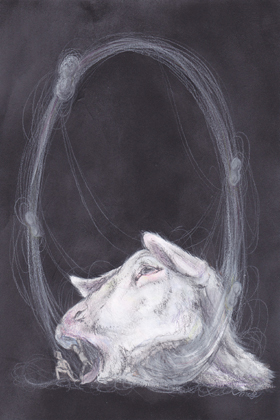
"Little People" by Hatakeyama
Course Description:
This course focuses on underlying religious and philosophical assumptions in the most recent works of Haruki Murakami (1949-), 1Q84 in three volumes and Colorless Tsukuru Tazaki and His Years of Pilgrimage. Murakami is the most popular and widely read novelist in Japan today and a major literary figure worldwide. He cites as his two sources for inspiration in writing 1Q84 George Orwell and the AUM religious cult, responsible for bombing Tokyo subways with sarin gas in the 1990s.Course Objectives:
Students will explore the ways Murakami’s recent writings assume multiple realities, his characters struggle with the existence of God/s or entities with divine capacities, their own unfathomable supernatural abilities, dealings with cult leaders, and how his themes incorporate shamanic elements.Student Learning Outcomes:
On completion of this course, students will be able to
- demonstrate knowledge of various theories of multiple realities past and present,
- express themselves on topical issues concerning the relationship of modernity and religious beliefs,
- describe shamanic practices and beliefs in relationship to literature, and
- identify and evaluate critically cultural religious and philosophical assumptions as they appear in writings of modern Japanese literature.
